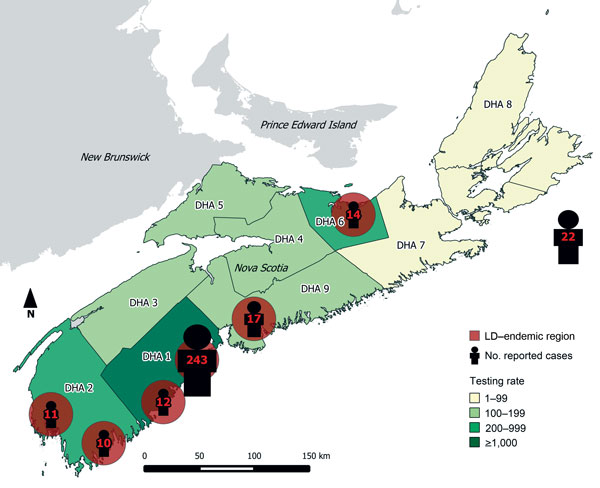Volume 21, Number 10—October 2015
Research
Epidemiology of Lyme Disease, Nova Scotia, Canada, 2002–2013
Figure 1

Figure 1. Reported cases of Lyme disease (LD) for 2002–2013, by endemic region of exposure and LD testing rates by District Health Authority (DHA) for 2013, Nova Scotia, Canada. Of the 22 cases without a known link to an LD-endemic area in Nova Scotia, 17 persons were infected outside the province (Europe and the United States); for 5 persons, location of exposure was either unknown or outside of known LD-endemic regions. Testing rate is per 100,000 population.
Page created: September 22, 2015
Page updated: September 22, 2015
Page reviewed: September 22, 2015
The conclusions, findings, and opinions expressed by authors contributing to this journal do not necessarily reflect the official position of the U.S. Department of Health and Human Services, the Public Health Service, the Centers for Disease Control and Prevention, or the authors' affiliated institutions. Use of trade names is for identification only and does not imply endorsement by any of the groups named above.